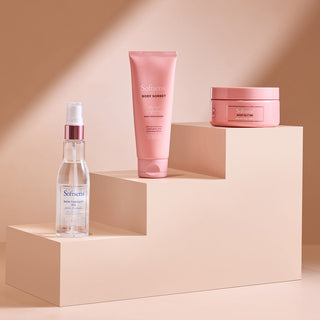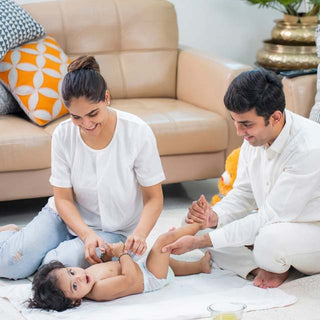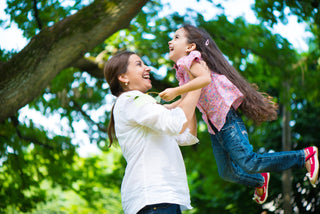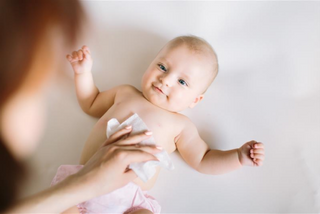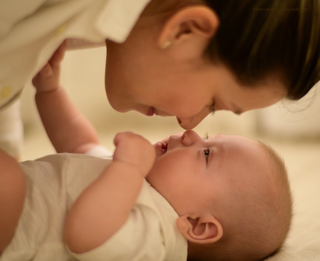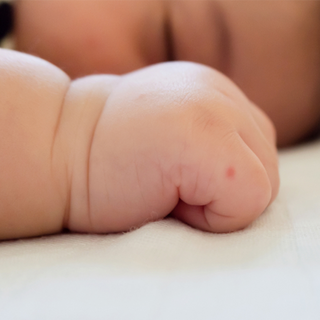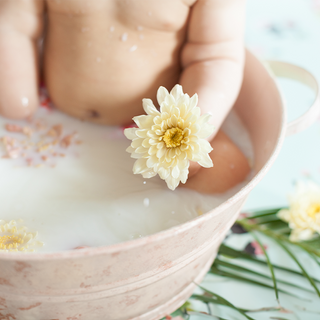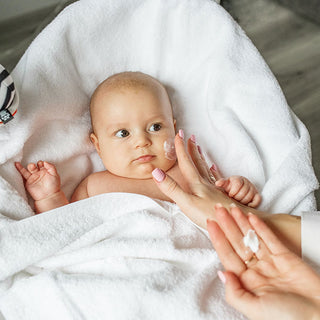
Heat rash is a pretty common skin condition and often tends to show up more during the warmer months or in humid climates when one tends to sweat more. Heat rash, also commonly known as prickly heat, occurs when excessive sweating causes the sweat glands to become blocked, due to which sweat gets trapped under the surface of the skin, leading to reddish or pinkish bumps, pimples and/or blisters. While this can be quite uncomfortable for your precious little one, the good news is that regular cases of heat rash tend to go away within a couple of days, when treated right.
Although both babies & adults can get heat rash, it is more common amongst babies due to a number of reasons:
(1) Babies cannot easily regulate their body temperature in the same way that adults do. This means that they also tend to overheat faster or to lose heat faster, depending on the temperature.
(2) Babies have underdeveloped sweat glands. As a result of this, they are not able to produce sweat in the same way that adults do, causing this sweat to then become trapped under the skin’s surface.
(3) As babies can’t communicate their needs to you, it’s not always easy to know if your baby is feeling overheated or uncomfortable.
How do you spot heat rash in babies?
Babies have very sensitive skin and are quite prone to skin rashes and irritations. This can sometimes make it hard for you to differentiate between a heat rash or some other kind of rash. Some common signs of heat rashes in babies are:
- Pinkish or reddish patches of skin
- Small bumps, inflammation or pimples on skin
- Usually seen on the skin around the neck, chest, armpits, diaper region and areas where your baby tends to sweat more
- While not all cases of heat rash are uncomfortable, you may notice that your baby is excessively irritable or cranky due to the skin discomfort
How do you prevent heat rash in babies?
Even though heat rash does commonly affect little ones, especially during the hotter months, here are some practices you should follow to help prevent heat rash in babies:
-
Make sure your little one stays cool and comfortable
You can prevent overheating by making sure that your little one is always in a cool and comfortable environment. In the hotter months, keep the temperature in your home cool with fans and air-conditioning. This will prevent your little one from sweating too much. If you’re taking your baby outdoors, dress them in light and breathable clothing and shade them from direct sun exposure. Follow proper sun safety measures when taking them out.
When babies get overheated, you’ll notice that their skin might become red or hot to touch. This is a definite sign that your baby needs to cool down.
-
Keep the skin dry
Sweat and moisture can tend to accumulate on your baby’s skin, especially in the skin folds. Try and keep your baby’s skin dry at all times. Dab their skin gently after a bath and wipe away any sweat or grime through the day using safe, gentle and pediatrician-approved baby wipes. Whenever you change your baby’s diaper, always dry skin thoroughly or let it air dry before putting on a new one. After cleaning your baby’s diaper region, gently dab the skin with a mildly-formulated baby powder such as Softsens Baby Powder to help absorb excess moisture to help keep your baby’s skin cool & dry, yet soft & supple.
-
Nourish dry skin using a gentle & lightweight baby moisturizer
While it’s important to keep your baby’s skin dry, some babies also have excessively dry and flaky skin which can be uncomfortable as well. In the summer months, switch to a lightweight moisturizer like Softsens Baby Daily Moisturizing Lotion that gently hydrates the skin without clogging pores or leaving behind any stickiness.
-
Dress baby in loose and breathable clothing
Tight and uncomfortable clothing can be one of the contributing factors of heat rash in babies. Dress your little one in lightweight and loose clothing that doesn’t stick to their skin. Our range of breathable certified organic cotton clothing are designed to keep your babies comfortable and cozy, making them the perfect summer essentials.
Tips for treating heat rash in babies
In the likelihood that your baby does get heat rash, it’s not a major cause for concern. With the right care, heat rash normally clears up within a few days. However, if the rash lasts longer than 3-4 days and if you notice pus-filled blisters or that your baby has a fever, loss of appetite or seems very distressed, consult your pediatrician as soon as you can to help treat your baby’s skin. In regular cases of heat rash, follow these simple tips to help clear it up.
-
Allow the skin to breathe
When you let your baby’s skin breathe, it helps keep the skin cool, dry and helps clear up the rash much faster. If possible, give your baby lots of diaper-free and clothing-free time to allow their skin to heal. The more you do this, the faster the rash will clear up.
-
Use a cold compress to soothe skin
Cool and soothe your baby’s skin by applying a cold compress on the affected areas. A cool wet washcloth can do the trick. Make sure you air dry the skin properly after.
-
Maintain a lower temperature in your home
Try and keep your home at a cooler temperature to help keep skin dry. Make sure the room is at a comfortable temperature especially when they are sleeping. Even if your baby is used to being swaddled while he/she sleeps, try and avoid the swaddle at this time.
-
Nourish them with lots of fluids
Keep your baby nourished and well-hydrated from the inside by providing lots of fluids.
-
Trim baby’s nails
Any kind of rash usually prompts a bit of itching. So, make sure you keep your baby’s nails well-trimmed or make them wear mittens while they are sleeping so that they don’t hurt their skin.
-
Give baby a bath with lukewarm water and use extra-mild cleansing products
While a bath can help cool down their skin a little, make sure you use lukewarm water. Use mild baby products to cleanse their delicate skin at this time. Softsens Baby Nourishing Bar is made with soothing Colloidal Oatmeal and Vitamin E that is perfect for your baby’s sensitive skin at this time.
-
Choose light, moisture-wicking baby clothing
If your baby does have a heat rash, it’s crucial to dress them in light, loose and gentle fabrics during this time. Moisture-wicking fabrics like Bamboo can actually help draw moisture away from the skin, keeping it cool and dry.
As we mentioned before, if the rash does persist or you notice any other symptoms, it is always safer to consult your baby’s pediatrician.
Has your baby ever had heat rash? Tell us your tips for preventing and dealing with heat rash in the comments below.




